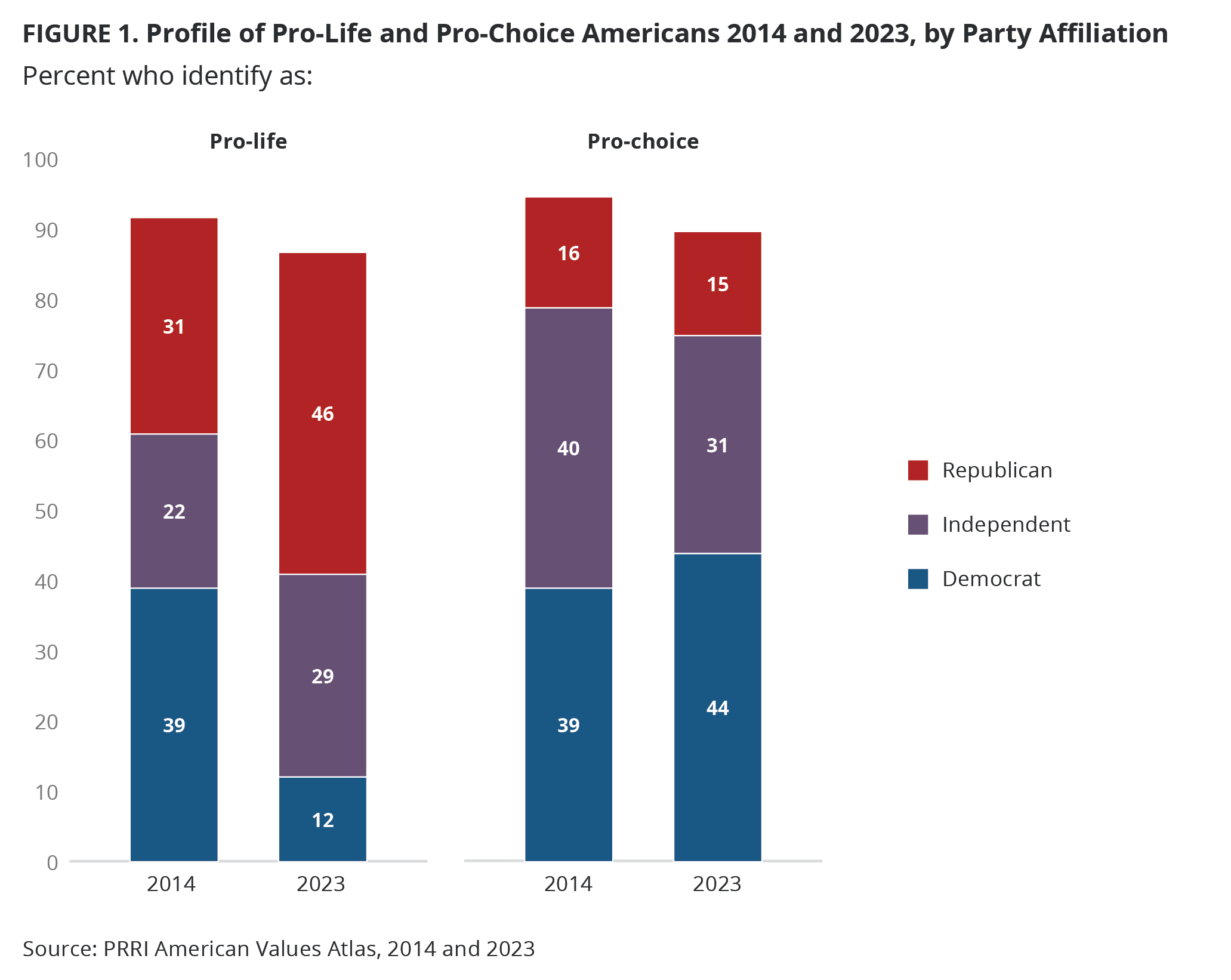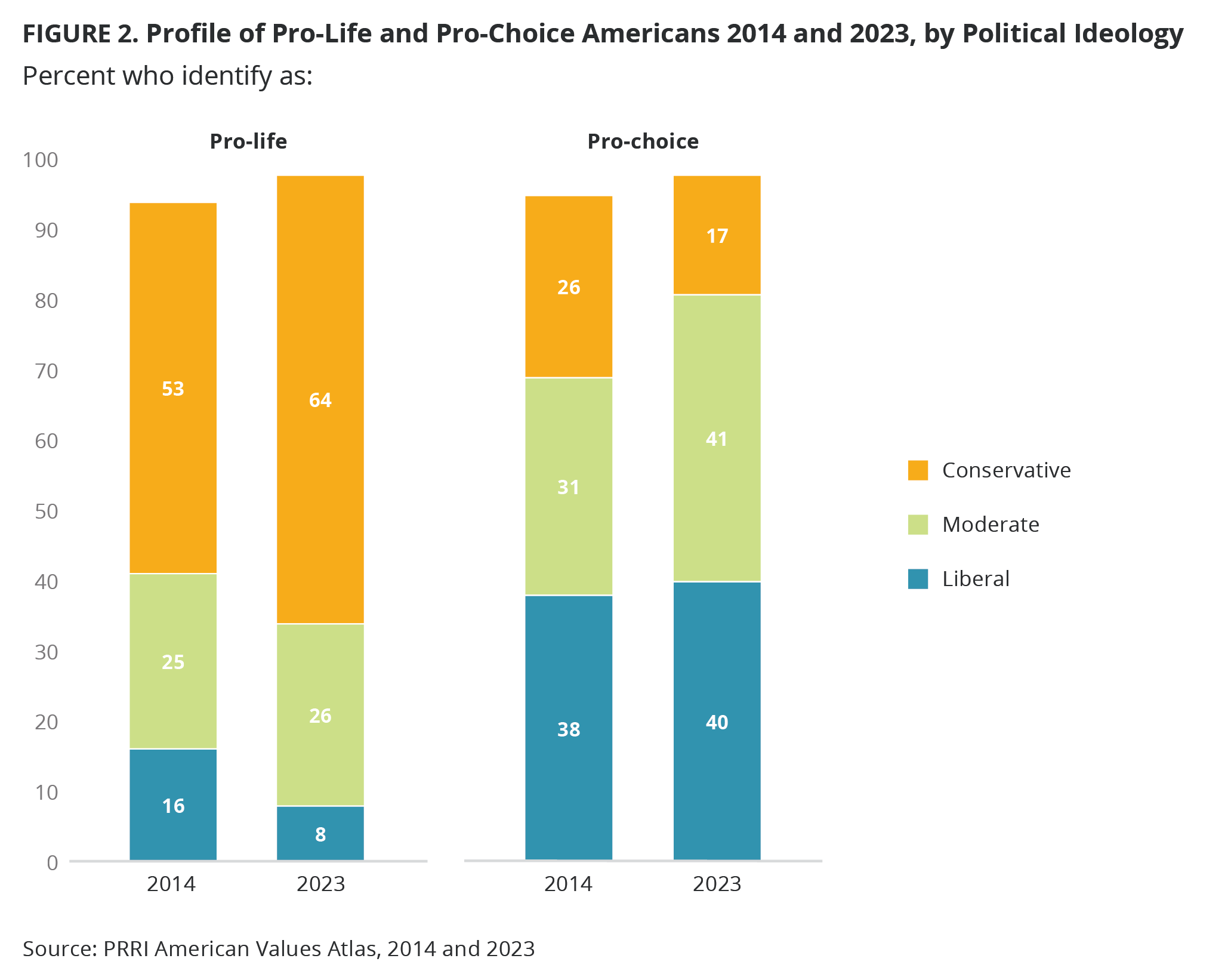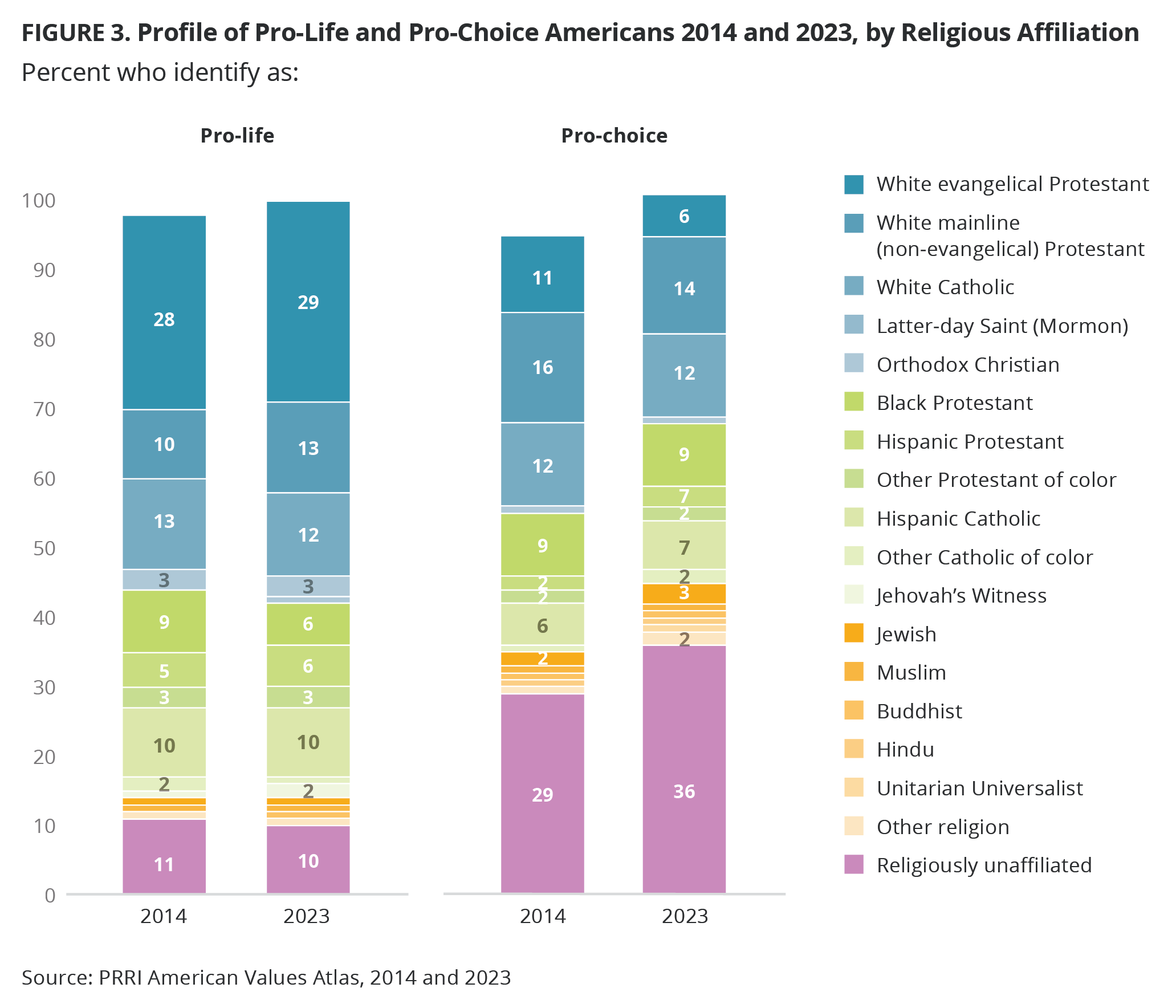Abortion is generally seen as a partisan issue, although there are partisans who venture across party lines when adopting stances on abortion, such as “pro-choice” Republicans and “pro-life” Democrats.[1] We know that Americans have generally become more accepting of abortion’s legality over the past few years, but how has the composition of pro-life and pro-choice constituencies changed?
A deeper dive into PRRI data shows that the party affiliation and political ideology of pro-life and pro-choice Americans became more sorted in the last decade, with Republicans and conservatives making up a much larger base among pro-life Americans. By contrast, Democrats and moderates have become a bigger faction among Americans who identify as pro-choice. The religious breakdowns of these bases, however, remains largely similar — although the percentage of pro-choice Americans who are religiously unaffiliated nearly doubled.
Party Affiliation
In 2014, 31% of pro-lifers identified as Republican, compared with 39% who identified as Democrats. In March 2023, there was a profound shift in pro-life partisanship, with a significant increase to nearly half of pro-lifers identifying as Republican (46%), while those who identified as Democrat declined significantly to 12%.
By contrast, in 2014, 16% of pro-choice Americans identified as Republican, compared with 39% who identified as Democrat. In March 2023, pro-choice Americans endured a partisan shift too, particularly among those who identify as Democrats with a significant increase to 44%, while those who identified as Republican remained about the same (15%).

Political Ideology
In 2014, pro-life Americans (53%) were more conservative than all Americans (38%). Yet in March 2023, pro-life conservatives increased to 64%, outweighing the average of conservative Americans by about 30 percentage points. Moreover, 25% of pro-lifers in 2014 identified as moderate, while 16% identified as liberal. Pro-lifers who identified as moderate (26%) remained stable over time, but pro-lifers who identified as liberal declined significantly to 8% in March 2023.
By contrast, in 2014, pro-choice Americans were liberals (38%) and were more liberal than all Americans (28%). In March 2023, pro-choice liberals increased to 40%, outweighing the average liberal American by 12 percentage points. Additionally, 31% of pro-choice Americans in 2014 identified as moderate while 26% identified as conservative. While pro-choice Americans who identify as conservative declined to 17% In March 2023, pro-choice Americans who identify as moderate went up to 41%.

Religious Affiliation
In March 2023, 29% of pro-lifers identified as white evangelical Protestants, 13% as white mainline/non-evangelical Protestants, 12% as white Catholics, and 6% as Black Protestants; in 2014, those percentages were virtually the same. Pro-lifers are more likely to identify as white evangelical Protestants than all Americans (29% vs. 14%) and are significantly less likely to identify as religiously unaffiliated than all Americans (10% vs. 27%). In fact, religiously unaffiliated Americans have grown about five percentage points since 2014 (21%).
In March 2023, 6% of pro-choice Americans identified as white evangelical Protestants, 12% as white Catholics, 14% as white mainline/non-evangelical Protestants, and 9% as Black Protestants. In 2014, those percentages were practically the same for white Catholics, white mainline/non-evangelical Protestants and Black Protestants; however, white evangelicals in 2014 made up roughly 1 in 10 pro-choice Americans (11%). At the same time, religiously unaffiliated Americans now make up a larger part of the pro-choice constituency, from 29% in 2014 to 36% in 2023.

[1] We recognize that the terms “pro-choice” and “pro-life” are typically adopted by movement advocates to describe themselves. For the purpose of this analysis, we adopt the terms solely for ease of understanding.





